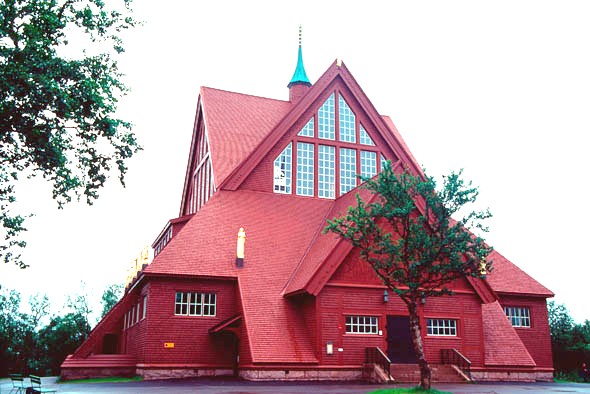Situated in the northernmost part of Sweden, Kiruna was at that time, no more than a few buildings "in the middle of nowhere."
My great grandfather was a constructor and entrepreneur and he participated in the work of planning and building the town of Kiruna. The iron ore railway constructed from Luleå to Narvik passing through Kiruna was at this time just about to be completed. The fact that the mountains of Kirunavaara and Loussavaara held large deposits of iron ore had been known since the 16th century but it was not until the railway made it possible to transport the iron ore in bulk to the harbours of Luleå and Narvik that mining activities here became profitable. The construction of the railway created something of a "Klondyke" situation in this part of Sweden and in 1900 the town of Kiruna was officially founded.
Today, over a hun dred years later, the municipality of Kiruna has 22 000 inhabitants with the mining company LKAB being the largest employer. Iron ore is, together with forestry, one of the main branches of Swedish economy. LKAB has an annual revenue of 28 billion Swedish kronor. The town of Kiruna was literally built on the mine and the iron ore body stretches under the centre of Kiruna. LKAB has decided to start exploiting the iron ore which is located under the centre of the town and therefore large parts of the town will have to be moved. This includes the railway station as well as the beautiful church that has been named 'most beautiful public building' in Sweden.
dred years later, the municipality of Kiruna has 22 000 inhabitants with the mining company LKAB being the largest employer. Iron ore is, together with forestry, one of the main branches of Swedish economy. LKAB has an annual revenue of 28 billion Swedish kronor. The town of Kiruna was literally built on the mine and the iron ore body stretches under the centre of Kiruna. LKAB has decided to start exploiting the iron ore which is located under the centre of the town and therefore large parts of the town will have to be moved. This includes the railway station as well as the beautiful church that has been named 'most beautiful public building' in Sweden.
The re-positioning of Kiruna will of course be a very complicated project and something that is estimated will take over 30 years to complete. Even though the town of Kiruna as it exists today owes thanks to the iron ore mine, with its future still depending heavily on the continuation of mining activities, the town is, internationally at least, perhaps known more for its ice hotel than for mining. Each winter over 1000 tonnes of ice are harvested from the Torne River to construct the hotel in the village of Jukkasjärvi 20 kilometres from the centre of Kiruna.
The history of Kiruna is representative of that of regional development more broadly in Northern Sweden. The exploitation of natural resources; timber, iron ore and hydropower, provides the foundation for most towns and villages in this part of the country. During the second part of the 20th century, mines closed down and the forestry sector underwent a process of rationalisation, which led to many communities loosing most of their inhabitants.
Even though many people, particularly the young, leave Kiruna to study and work in Luleå, Stockholm or Lund the town nevertheless continues to prosper. 'Moving' the town is necessary to secure a future for mining activities and thus, for the continued existence of Kiruna.
Read more
Kiruna in brief
Kiruna Iron Ore Mine